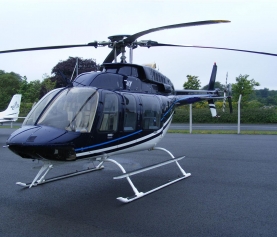
Flying The Piper Seneca PA-34 V
Anybody in the market for a new light piston twin will not have to spend much time creating a list of potential aircraft to buy. As long as we can agree that the French single-seater Cri Cri and the open cockpit Air Cam do not quite cut it as viable options in the quest for a do-it-all twin, there are just a handful of aircraft up for consideration.
If your criteria include bringing along more than three passengers, the list is suddenly narrowed to only two choices. And if you have less than $1-million to spend, you have no choice-you’re buying a Piper Seneca V or nothing at all. That is a sad commentary on the current state of the light piston twin market, but it is not a knock on the Piper Seneca.
Just the opposite ,the Piper PA-34 is a classic that’s still relevant today-perhaps more relevant than ever in a market offering just two six-seat general aviation piston twins, namely the Seneca V and the pricier Beech Baron G58. The Seneca has often been thought of as an also-ran to the Baron, known for its crisp handling and vault like build quality.
But when you compare them side by side, there is an argument to be made that the Piper Seneca is the smarter choice. It actually has a more comfortable cabin than the Baron, cruises nearly as fast, can carry almost as much, burns less fuel, costs less to maintain and sells for about $ 300,000 less than the sticker price of a comparable G58.
The Seneca has managed to stay in continuous production for so long by combining a solid airframe with a host of refinements and upgrades inside and out since the first PA-34 rolled out of the Piper factory in 1971. Today’s highly evolved Piper Seneca offers what a lot of pilots consider the ideal attributes of a personal airplane: two engines for redundancy in power and systems, respectable performance, stable handling, ice protection, the latest in avionics technology and lots of room in a comfortable cabin.
The latest Piper Seneca V, which is built in Vero Beach, Florida, is the best one yet, thanks to the addition of Garmin G1000 avionics up front and smart improvements inside of what was already one of Gas widest cabins. A lot of aircraft benefit from Garmin technology, but in the Seneca’s case, G1000 is precisely what this gracefully aging twin needed. That it took Piper so long to figure this out is surprising considering the manufacturers emphasis on selling aircraft in the training market, but now that G1000 has arrived in the Seneca V, Tyre-kickers from many parts of the world are sitting up and taking notice.
When Piper introduced the Seneca V in 1997, it represented a major improvement over the Seneca 1V-andin the 17 years since then; Pipers top-of-the-line twin has undergone major changes. For starters, it has courted a dizzying number of avionics suitors before finally settling down with G1000. First, there was a package centered around the Bendix/King KLN-90B GPS receiver, which was not a bad choice at the time. Later, there was an optional electronic flight information system paired with a Garmin GNS 430/530 combination.
Next, Piper offered Avidyne Entegra .And most recently, the Garmin G600 system mated to a pair of GNS430s became the standard avionics package. None of these panels did the Seneca justice, however. That has all changed with the G1000, which looks as if it was tailor-made for the space. The three-display arrangement fits the wide panel almost perfectly. The upgrade from G600 to G1000 makes a difference not only in the size of the displays (165 versus 264 mm) but also in terms of capabilities.
When Piper brought G600 to the Seneca, it seemed like a temporary fix-probably because it was. G1000, on the other hand, elevated the Seneca to a more level playing field with the Baron G58, which also features a G1000 panel. Seneca’s standard avionics package also features an Aspen Avionics standby display, something the Baron lacks. This display provides all the information you would need to keep flying in just about any weather and eliminates the requirement for elector-mechanical back—ups or even a whiskey compass. Adding the three-display version of G1000 to the Seneca also allowed Piper to get creative with the shape of the glare shield.
A flatter design improves the view outside, a change that is especially welcome on approach and during the flare, as I found out when I flew the Seneca V out of Vero Beach with Piper engineering test pilot, John Kronsnoble. The aircraft I flew was actually the avionics certification test mule with a cabin devoid of the usual club leather seats, plush carpeting and other touches.
Still, it was no stretch to imagine what a comfortable long-haul aircraft this would be once all the engineering test gear in back was replaced with production furnishings. Besides, I didn’t really care much about what the cabin looked like-I was too interested with what was new in the panel. I have been flying G1000-equipped aircraft since the G1000 first emerged, so it is tough for me to get really excited about seeing yet another iteration of the ubiquitous Garmin cockpit. But the G1000 in the Seneca just seems so right-the layout of the engine and systems indications is exceptionally well executed, with no overlapping needles anywhere and flap and gear position indications front and centre on the MFD.
Crew alert messages are easy to read and understand .Among the new features are user-defined holding patterns that can be created at any point in space through a series of menu selections on the MFD. The Seneca’s S-Tec 55X autopilot (due for replacement by the Garmin GFC 700 flight control system later this year) will even fly the correct entry for you automatically.
Another welcome upgrade is the selection of the Aspen standby system in lieu of the usual mechanical backups that are normally required in G1000 installations.Together, they provide some exceptional redundancy. There are G1000 primary and backup batteries, dual alternators and a backup battery in the Aspen display-making the chances of a total electrical failure in the Seneca extremely unlikely. Thanks to the thought that has gone into the avionics design, flying in a degraded avionics mode is really a non-event, Kronsnoble says.
And anyway, not much can go wrong in this aircraft without the pilot being warned about it through the G1000 alerting system. My initial impressions of the latest Seneca were reinforced when I flew it. In truth, this iteration of the PA-34 handles about the same as any other –and that is a good thing.
The Seneca is fun to hand fly and rock solid in roll and pitch, thanks to its constant-chord wing, long ailerons and a nicely weighted stabilator at the back. The propellers connected to the Seneca’s 220 hp Continental TSIO-360-RB engines are counter-rotating, meaning there is no critical engine in an engine-out emergency –another advantage over the Baron. Those turbocharged Continentals can produce rated power all the way to 19,500 feet. Even down at 12 000 feet, the Seneca can true at 180 knots on 24 gallons( 91 litres) of fuel per hour.
Piper PA-34 Seneca V is one of the twin piston engine VIP configured aircraft that are used for training pilots and for private charter flights. This aircraft is efficient, reliable and cost effective in fuel consumption and maintenance. It has short take off and landing performance and it is ideal to remote areas and tidy airfields.
It is the most affordable VIP configured aircraft for 3 to 5 passengers and its price will be almost a quarter of the King Air 200 and it has 5 hours and 30 minutes fuel endurance.
It is ideal for scenic flights, sightseeing flights,Multi Engine/ Instrument rating training due to it low consumption of fuel and maintenance cost. It is the preferred aircraft for pilot multi engine and instrument rating training globally as most flying schools have it in their fleet. Anthony A Juma is the Editor and Director Commercial and Flights Operations at Wings Over Africa Aviation Limited.





